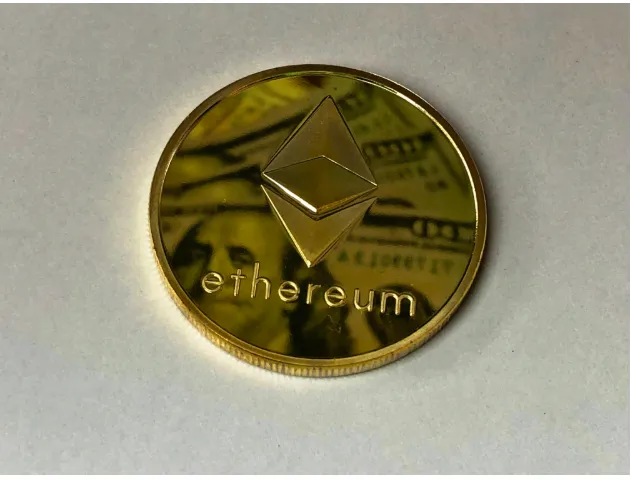Ethereum is more than crypto prices; it’s about publicly demonstrated proof. In a world drowning in promises and reports, the blockchain enables businesses to explain only the real, not the pen and paper.
When the Ethereum price in India moves, it does more than shift investor sentiment; it reflects how strongly people believe in Ethereum’s utility as infrastructure beyond finance. According to Binance Research (October 2025), “The total crypto market cap lost more than US$300B this week, falling to US$3.7T towards the end of the week. Riskier assets like altcoins fell the most, with Ethereum falling over 13% and Solana by 20%. BNB fell only by ~3% while BTC slipped ~6%.”
Yet even as the numbers swing, Ethereum’s role in building verifiable trust is holding firm and quietly changing how corporations demonstrate accountability.
Blockchain as the new proof
Ethereum’s ledger immutably and publicly records all actions. On-chain information can’t be silently modified or deleted since each blockchain block of cryptocurrencies references the previous one.
Such indelibility gives credence to blockchain; every entry becomes a timestamped proof certificate. Companies may keep records of supply chains, environmental information or audit records in Ethereum, which anyone can instantly verify.
However, the integrity of such a record also relies on trustworthy inputs. The blockchain saves errors if a roped-in system or oracle provides faulty information. That’s the reason independent verification from credible sources still matters.
Crypto exchange Binance’s statistics (September 2025) report that over 9,500 cryptocurrencies are traded daily, with a volume of about $268 billion in 24-hour trading.
Such mass-scale, traceable behaviour demonstrates how Ethereum’s network enables transparent operations at speed and scale, which standard corporate systems have failed to achieve.
The difference is mathematical integrity: blockchain does not depend on humans but on cryptographic certainty.
Smart contracts, real accountability
Ethereum’s smart contracts are like digital arbiters. They are indifferent to rank, title or rhetoric, caring only whether agreed-upon conditions are fulfilled. The contract checks the blockchain for proof that a company promises payment after verifying fair-trade sourcing. There is no record, no payout, just fairness enforced by code.
This automation removes human delay and discretion. Once conditions are programmed, execution is inevitable.
Binance Insights notes a global “shift toward trustless systems where code enforces integrity.” In other words, math replaces negotiation and blockchain guarantees delivery. The more profound truth is that transparency no longer hinges on authority but on actions verifiable in real time.
Real-world use, not hype
Ethereum is also being put in the serious ring. In 2025, the U.S. Department of Commerce started publishing GDP and macroeconomic data on-chain with Chainlink and Pyth oracles, enabling officially correct stats to be verified directly in Ethereum and other blockchains.
The project, described by CoinDesk and Global Government Fintech, is bigger than symbolic; it’s an operational paradigm revealing how tamper-proof information systems can safely run in real time.
Companies are catching up. For example, EY has developed Ethereum-based applications to manage carbon emissions, authenticate supply chains and conduct live audit trails.
Some are investigating blockchain formats to validate charitable gifts or ethical origins. In such systems, investors, journalists and consumers can authenticate statements without filtered condensation or cherry-picked coverage.
In the longer term, this bodes well for a shift from professed transparency to actual documentable proof, a code-based system, not corporate doublespeak.
The institutional turn
When large players engage, the market listens. Binance Research (October 2025) reports that institutional Bitcoin ownership climbed from 0.9% in 2014 to 19.8% today, showing rising trust in blockchain infrastructure.
Ethereum’s Fusaka upgrade, which doubled blob capacity and introduced PeerDAS for faster data handling, underscores its readiness for enterprise-scale adoption.
This technical evolution matters. Businesses require a secure and capable blockchain that can handle enterprise workloads. Ethereum’s advancements make that possible, paving the way for use across audit-heavy sectors like logistics, finance and sustainability.
A cleaner path forward
Ethereum’s 2022 Proof-of-Stake upgrade reduced energy consumption by more than 99 percent, with projections indicating roughly a 99.95 percent reduction (Binance Research, 2024; Cambridge analysis). That action rectified one of the toughest challenges for blockchain critics.
Sustainable transparency is achievable at low cost; open data systems can run at low environmental expense, if not zero.
That’s what prevents Ethereum from perishing. It’s not only a transaction platform; it’s a trusting architecture.
-
Every block is permanent proof.
-
Every contract enforces fairness.
-
Every user can see the truth.


